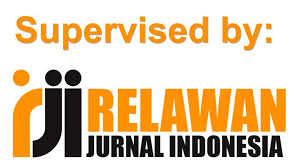ANALISIS UNDERGROUND ECONOMY INDONESIA DAN POTENSI PENERIMAAN PAJAK DI ERA TAX AMNESTY
DOI:
https://doi.org/10.31092/jia.v1i1.18Keywords:
underground economy, PDB, tax amnestyAbstract
The growth of underground economy activity believed has potential tax loss. This study aims to estimate the size of underground economy activities in Indonesia. Based on the results of these estimates, further calculated the potential tax loss due to the existence of underground economy activities. This study was conducted using quantitative approaches, namely currency demand model by Vito Tanzi (1980) and Faal (2003) which is estimated by ordinary least square (OLS) method. By using time series (quarterly) data period 2011-2015 this study found that the size o f underground economy is about Rp 536 trillion per year on average, equivalent to 22,1% of GDP. Meanwhile, the potential tax loss due to the activity estimated at Rp 487,12 trillion on average per year, or approximately 1,9% of GDP.
                    Â
Berkembangnya kegiatan underground economy diyakini berpotensi menyebabkan hilangnya penerimaan negara melalui sektor perpajakan. Penelitian ini dilakukan dengan tujuan untuk menganalisis dan mengetahui besarnya nilai kegiatan underground economy regional di Indonesia pada periode 2011 s.d. 2015 dan besarnya potensi pajak yang hilang akibat adanya kegiatan underground economy tersebut. Dengan menggunakan data sekunder berbentuk runtut waktu (time series) triwulanan dari rilis publikasi Bank Indonesia (BI), Badan Pusat Statistik (BPS) dan Direktorat Jenderal Pajak Kementerian Keuangan dan metode analisis kuantitatif yang diestimasi dengan metode Ordinary Least Square (OLS) serta perhitungan estimasi underground economy menggunakan pendekatan moneter yang dikonstruksi oleh Vito Tanzi (1980) dan Faal (2003), penelitian ini secara empiris mengestimasi nilai underground economy. berkisar antara Rp 289 triliun sampai Rp 958 triliun dengan nilai rata-rata mencapai Rp 536 triliun per tahun atau setara dengan 22,1% terhadap PDB Nominal. Sementara itu, akibat adanya kegiatan underground economy, potensi pajak yang hilang berkisar antara Rp 23,32 triliun hingga Rp 1.467 triliun dengan rata-rata per tahun mencapai Rp 487,12 triliun atau setara dengan 1,9% dari PDB.
References
DAFTAR PUSTAKA
Badan Pusat Statistik (BPS). (2017). Statistik Indonesia
Blanchard, Olivier. (2006). Macroeconomics. 4th Edition. USA : Pearson International.
Direktorat Jenderal Pajak (DJP). (2017). Statistik Tax Amnesty
Faal, Ebrima. (2003). Currency Demand, the Underground Economy, and Tax Evasion: The Case of Guyana. IMF Working Paper. WP/03/7. Washington : International Monetary Fund.
Feige, Edgar L. (1990). Defining and Estimating Underground and Informal Economies : The New Institutional Economics Approach. World Development. Vol. 18 No. 7
Ghozali, Imam. (2006). Aplikasi Analisis Multivariat Dengan Program SPSS-Cetakan Keempat. Badan Penerbit Universitas Diponegoro Semarang
Gujarati, Damodar, & Elmasari. (2010). Dasar-dasar ekonometrika. Jakarta: Erlangga
Gunadi, Aloysius. (2004). Krisis dan Underground Economy di Indonesia. Badan Perencanaan dan Pembangunan Nasional.
Mankiw, N. Gregory. (2007). Makroekonomi. Edisi Keenam. Penerjemah: Fitria Liza, Imam Nurmawan. Jakarta : Penerbit Erlangga.
Nizar, M. Afdi, & Purnomo, Kuntarto. (2011). Potensi Penerimaan Pajak Dari Underground Economy di Indonesia. Kajian Ekonomi dan Keuangan, Volume 15 No. 2 Tahun 2011
Samuda , Sri Juli Asdiyanti. (2016). Underground Economy In Indonesia. Buletin Ekonomi Moneter dan Perbankan, Volume 19, Nomor 1, Juli 2016
Santoso, Singgih, Fandy Tjiptono. (2002). Konsep dan Aplikasi Dengan SPSS. Jakarta : PT. Elex Media Komputindo
Schneider, Friedrich. (2002). Hiding in the Shadows The Growth of the Underground Economy. IMF Economic Issues No.30 (March). Washington : International Monetary Fund
Schneider, Friedrich. Buehn, Andreas, & Montenegro, Claudio E. (2010). Shadow Economies All Over the World : New Estimates for 162 Countries from 1999 to 2007. World Bank Policy Research Working Paper (5536, July). Washington : World Bank
Schneider, Friedrich., & D.H. Enste. (2000). Shadow Economies : Size, Causes and Consequences. The Journal of Economic Literature Vol. 38, No. 1. pp. 77-114.
Schneider, Friedrich., & Hametner, Bettina. (2007). The Shadow Economy in Colombia : Size and Effects on Economic Growth. Johannes Kepler University Working Paper No. 0703 (January). Austria : Johannes Kepler University
Tanzi, Vito. (2002). The Shadow Economy, Its Causes and Its Consequences. Edited Lecture. Brazilian Institute of Ethics
Wahid, Sulaiman. (2002). Jalan Pintas Menguasai SPSS 10.0. _______________
Downloads
Published
Issue
Section
License
Authors who publish with this journal agree to the following terms:
- Authors retain copyright and grant the journal right of first publication with the work simultaneously licensed under a CC BY-SA Creative Commons Attribution-ShareAlike 4.0 International License that allows others to share the work with an acknowledgement of the work's authorship and initial publication in this journal.
- Authors are able to enter into separate, additional contractual arrangements for the non-exclusive distribution of the journal's published version of the work (e.g., post it to an institutional repository or publish it in a book), with an acknowledgement of its initial publication in this journal.
- Authors are permitted and encouraged to post their work online (e.g., in institutional repositories or on their website) prior to and during the submission process, as it can lead to productive exchanges, as well as earlier and greater citation of published work.














